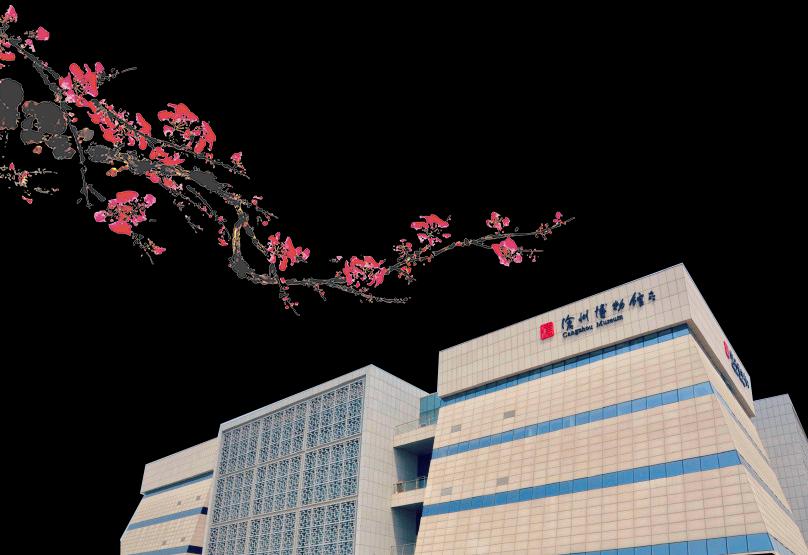
Bringing artifacts to life
Let the culture pass on
The Year of the Tiger says one of the tigers: the cultural image of the tiger
Speaking of tigers, everyone is not unfamiliar, in addition to the tigers in the zoo, we also have many customs related to tigers in our daily lives. For example: the tiger of the zodiac, various proverbs about the tiger, the tiger head shoes and hats worn by children, and various tiger-shaped ornaments. Tiger culture profoundly affects our daily lives, so what is the cultural image of the tiger in traditional Chinese culture?
Tiger pattern grey clay pot
First, the tiger is a symbol of mighty force. The tiger's bravery, majesty and strength, coupled with its bloodthirsty and ferocious habits, make people very afraid. Some of the idioms and sayings that we are familiar with, such as sheep entering the tiger's mouth, riding a tiger is difficult, talking about tiger discoloration, etc., reflect human fear of tigers. This fear gradually developed into a cult of tiger force. For example, ancient weapons and armor were often decorated with tiger heads and tiger stripes, the relics that conveyed military orders were called "tiger symbols", the deliberative hall where military discussions were called "White Tiger Hall", the brave and warlike generals were praised as "tiger generals", and the brave and fierce troops were called "tiger and wolf divisions". Among the martial arts equipment exhibited in the martial arts hall of the Cangzhou Museum, there are some tiger head decorations, and the shadow of the tiger can also be seen in many martial arts moves, such as the eight pole boxing, which is called "Tiger Hard Climbing Mountain".
Second, the tiger is a symbol of supreme power. The tiger is one of the animals at the top of the food chain in nature, and was called the king of the hundred beasts by the ancients. Rulers borrow the image and name of the mighty tiger to show the importance of their power and position, and use the tiger analogy with the ruler. "Guan Zi Interpretation: Situation Solution" Yun: "The tiger and leopard, the fierce one of the beasts, live in the deep forest and the vast zeal, then people are afraid of their might." The Lord of Man, the powerful one under the heavens, dwells deeply and fears his might. "During the Zhou Dynasty, the ceremonial vessels were mostly decorated with tigers, such as Simu Peng Dafangding, bronze dragon and tiger zuns, and cangzhou museum tibetan tiger pattern gray clay pots.
Third, the tiger is a symbol of health and strength. In the "Five Birds Play" founded by Hua Tuo for physical fitness, "Tiger Play" is the first. "Corpse" cloud: "The colt of the tiger and leopard, unfinished but has the spirit of eating cattle." "The young tiger has not yet grown up to swallow a large cow, which shows that it is healthy and strong. "Qing Jia Lu" Yun: "The thread is in the shape of a tiger's head, tied to the chest of a child, in order to show the fierceness of the service, called the tiger's head, and the child is tied with a red skirt, and also embroidered in the shape of a tiger, which is called the tiger's belly pocket." "The custom is to pray that children will thrive like little tigers, which has been passed down to this day. In the Folklore Hall of the Cangzhou Museum, many tiger-toed shoes and hats are exhibited, which is the proof of this folklore.
Fourth, the tiger is a symbol of immortality and exorcism. The suburban song of the Book of Han depicts the deity descending from the sky under the protection of the dragon and tiger: "Under the spirit, if the wind horse, the left dragon, the right white tiger." The "Liaoju Miscellaneous Works" and "Customs and Customs and Rituals" also have many descriptions in this regard, which shows that in people's minds, the tiger has become a kind of god, which can ward off evil and drive away evil.
After five thousand years of development of Chinese civilization, the image of the tiger has gradually evolved from the initial beast, and finally has political, religious, cultural and other connotations. How did this change happen? And what are the reasons? We will explore further with you in the next issue of "The Year of the Tiger: The History of the Cultural Development of the Tiger".
Author Lu Qingyuan